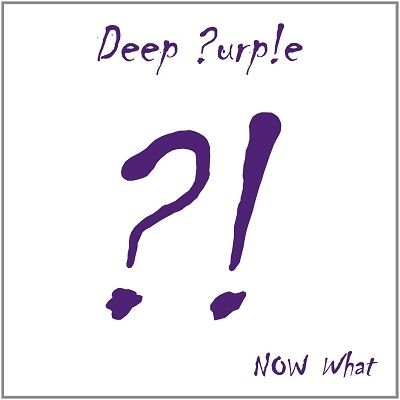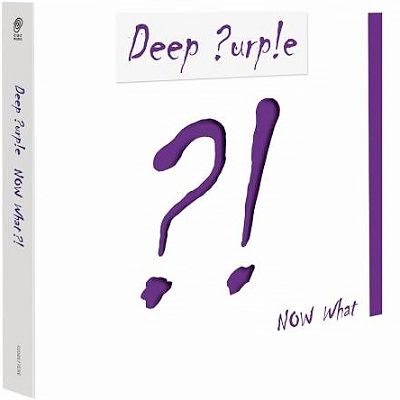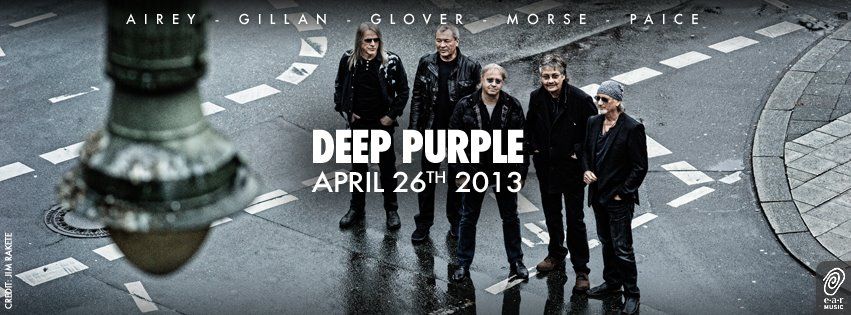Post by Erik Rupp on May 12, 2013 8:56:42 GMT -5


When Ritchie Blackmore left Deep Purple for the second time in 1995 (the first time being twenty years earlier) many fans thought that the band's time had run out. The revolving door of band members couldn't possibly sustain the band beyond the loss of such a key figure in the band, right?
With the release of the next year's, Purpendicular release - the first with new Purple guitar player Steve Morse - the band proved otherwise.
Purpendicular was a spectacular album, a true return to form in terms of songwriting and performing quality. Morse brought both more Hard Rock and more Jazz to the band's sound. Where Blackmore was influenced by Classical music, Morse came from a Jazzier background, but also had some solid Hard Rock chops that helped him fit into Purple perfectly. The album ranged from hard edged Rockers to mellower Jazz Rock songs to styles in between. Both the fans and the critics loved the album.
The three follow up albums in the Steve Morse era? Not as much. None of them (Abandon, Bananas, Rapture of the Deep) were bad, but none of them were as great from start to finish as Purpendicular was. They all had highlights that were as good as most of the songs on Purpendicular, but the inconsistencies of those albums took them down a notch. The loss of Jon Lord (who left the band in 2002, and, sadly, passed away in 2012) didn't hurt the band live (his replacement, veteran Don Airey did a great job in concert), but his songwriting skills were missed.
With the last Purple album, Rapture of the Deep, being released in 2005 it seemed like the band had no interest in writing and recording another. In fact, at one point Ian Gillan was quoted as saying that there wouldn't be another Purple album.
But Deep Purple, being the musician's musicians that they are, clearly felt the need to create again, and this time they enlisted famed producer Bob Ezrin (Alice Cooper, Pink Floyd, KISS) to take charge of the project.
The result? Seriously, now what?
The result was the best Deep Purple album since Purpendicular, and an album that holds up very well against even their best releases from their heyday back in the 1970's. Now What?! is a great Deep Purple album - one worth the 8 year wait.

The first thing you notice as a listener is just how much this album sounds like a cross between Purpendicular and Purple's comeback/reunion album from 1984, Perfect Strangers - both sonically and stylistically. The main difference in the sonics being the lack of the big, overproduced 1980's drum sound, but otherwise the sounds are somewhat similar.
You could be forgiven for thinking that, "A Simple Song," was something off a new Iron Maiden album from the intro. Mellow chords on Roger Glover's bass start the song, and Steve Morse's tasteful, restrained lead opens the song, and Ian Gillan's passionate, melodic vocals lead the way into an explosion of Purple Power. It is at this point that the song no longer sounds like Maiden, but something taking equal bits from early (pre-Gillan/Glover) Purple, the MK II line-up era, and the Purpendicular era. Don Airey clearly channels his inner Jon Lord and it's as if time has come to a standstill. It is a hauntingly beautiful song, and one of the best on a fantastic album.
"Weirdistan," sounds like a lost track from Perfect Strangers as if interpreted in 1996 by a reinvigorated, revitalized Purple with a slightly (very slightly) Jazzy feel. Actually, this sounds a bit like Abacab era Genesis on steroids, and maybe just a bit like some recent James Bond music. It's a great song.
The Perfect Strangers vibe doesn't end there. "Out Of Hand," again sounds a lot like something from that 1984 album through the filter of the Purpendicular sessions. Melodic, somewhat heavy, and moody, this mid-tempo song is nothing short of great. And by this point in the album it has become clear - the Purple/Ezrin pairing has resulted in a new classic.
Ezrin has worked wonders with Ian Gillan, whose vocal range has noticeably diminished over the years. Gillan sounds better on Now What?! than he has on any Purple album since Purpendicular. In fact, just about everyone involved with this album has stepped up their game to a higher level - including Ezrin. Drummer Ian Paice, bass player Roger Glover, guitarist Steve Morse, and keyboard player Don Airey all give fantastic performances that are among the best in each of their respective careers, and that's saying a lot.
"Hell To Pay," is probably the closest that the band comes on the album to their most famous style from the 1970's. The longer (non-radio edit) version of the song on the album features an extended Hammond organ solo from Airey that just screams Jon Lord while showing some of Airey's own style (he did play for Rainbow, Ozzy Osbourne, Gary Moore, Jethro Tull, and Whitesnake, among others). This is yet another great track.
The slightly looser, Jazzier feel is front and center on, "Bodyline," a song that could have very easily been included on Purpendicular. The song bounces with a vibrance that belies the years behind the band and it's members. There is energy and vitality here in spades as Deep Purple proves that they still have a lot left in the tank. Ezrin manages to coax a bouncy, Jazzy performance out of the band without sacrificing the hard edge that made the band famous. This is one of the album's highlights, although, to be honest there are a lot of highlights on this album.
"Above and Beyond," has a bit of an Emerson Lake and Palmer feel to it with Airey's brassy keyboard part at the beginning of the song sounding particularly ELP-ish. As the song settles in to the first verse the band takes it down a notch as Gillan gives another restrained vocal with a ton of feeling. Dynamics seems to be the key word for this song, and while it isn't quite as good as the best songs on the album it is more ambitious. And it's still a very, very good song. When the weakest songs on your new album are merely very good you've come up with something remarkable.
For the next track, "Blood From A Stone," the band reaches back to the 70's for inspiration. The thing is, it's not the band's own past from the 1970's, but the influences of a lot of 1970's artists, ranging in style from R&B to Jazz to Rock. Airey plays an electric piano on this one (an underused musical weapon that has been largely neglected over the last two or three decades) as well as the requisite Hammond organ. The song has a mellow-ish groove most of the way (with a somewhat heavy chorus), and the groove is just spectacular. In a word - WOW. Ezrin said he wanted to not only capture the band's signature style, but he wanted to push the boundaries of what that style could include, and this song is a great example of the results.
More ELP-isms abound in the majestic, "Uncommon Man," which is particularly inspired by Aaron Copland's, "Fanfare For The Common Man." Again, Don Airey gets a chance to shine here as he puts his spin on the proceedings. It's yet another dynamic track - and another that falls in the, "Very good," category.
"Apres Vous," finds the band venturing a little closer to their early to mid 1970's style while still showing bits of Perfect Strangers and Purpendicular. It's a Hard Rocker that just screams, "DEEP PURPLE!!" And, oh, by the way - it's a great song, too. The band plays this mid-tempo song with a confidence and a maturity that is equalled by the energy and power involved.
The lead single from the album, "All The Time In The World," is a laid back, almost early to mid 70's California Rock type of song (through a Purple filter, of course). There is a slight Country feel with some slide guitar present (tastefully mellow and kept to a supporting role). This song is loaded with nuance and detail. Ezrin's influence has brought out elements that were new to the band on Purpendicular and expanded on them.
The standard edition of the song closes out with the darker, moodier, "Vincent Price," which opens with the same keyboard sound that Airey used on, "Mr. Crowley," for Ozzy Osbourne. The main song itself is dark (for Purple) and heavy in a moody, atmospheric way. For a song this dark and moody it's got an infectious groove, a significant achievement. And, yes, this is a very good song, aiming for greatness, but just barely missing.
The collaboration between Deep Purple and Bob Ezrin can be called nothing short of a rousing success. Now What?! is a great album. The songs are all very good to great and the sonics of the thing are fantastic.
This is definitely a, "Must have," album.
4.5/5

